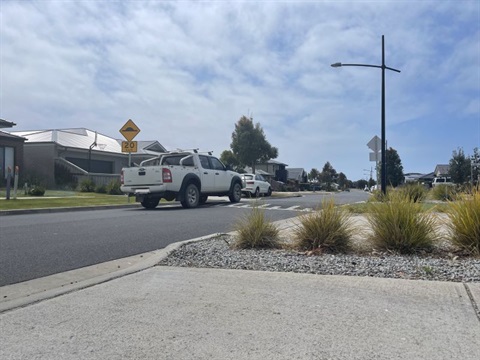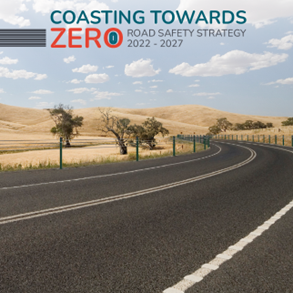What is traffic calming?

Traffic calming is the use of a physical engineered designed measure to improve the road safety for all road users, pedestrians, cyclists and motorists. It is essentially aimed at reducing the speed of vehicle movements and unsafe driver behaviour.
Measures include:
- Narrowing of roads or traffic lanes through line-marking changes or kerb outstand areas and traffic islands
- Installing speed humps or speed cushions
- Reducing access to some streets and encouraging the spread of traffic
Traffic calming can help to make streets safer for all the functions they offer, making our urban environments better places to live, including being more friendly social spaces.
Traffic volumes and street designs
The volume of traffic will vary depending on the function of the road. Occasionally some roads carry traffic volumes much higher than designed, or previously experienced. If you believe there is an unreasonable amount of traffic in your street, you can request a review.
Concerns about traffic volumes in streets have increased over recent years as more people have chosen to make their permanent residence within Surf Coast. The popularity of Surf Coast as a tourist destination also results in peak traffic demands during the summer months. Requests to check traffic volumes have been increasing in number each year.
The majority of the investigations find traffic volumes (measured in vehicles per day) (VPD), are within the design levels for the type of street. Most of our local urban streets are designed to carry 2500 and higher up 6000 vpd when they are a collector street. The table provides an overview of street types and traffic volume design levels.
|
Street Type
|
Indicative Traffic Volume (vehicles/ day)
|
|
Access Lane
|
0 - 300
|
|
Access Place
|
0 - 300
|
|
Access Street (includes two way frontage streets and service lanes)
|
0 - 2500
|
|
Collector/ Connector Street Level 1
|
2500 - 6000
|
|
Collector/ Connector Street Level 2 (alternatively called trunk collector)
|
6000-12000
|
|
Residential Court Bowl
|
n/a No through traffic
|
Types of traffic calming treatments
It is possible to influence driver behaviour and the choice of vehicle routes by introducing traffic calming treatments into a neighbourhood. These decisions have to be planned in the context of the wider area as it will result in a change to traffic movements which may then redirect the traffic volume issue to another place.
The speed of traffic is measured to the 85th percentile, at which point a design intervention may be necessary. This means 85% of the traffic on the road is travelling in free flowing conditions. For example, in a residential street in Torquay, the 85th percentile is the traffic speed information used to determine how vehicles are driving on a road.
This is normally reviewed against the posted limit (in residential streets this is 50 Kmph). If we find that the street has an 85th percentile over the posted limit, we start to review the need for traffic control measures. Once vehicle speeds are consistently trending above the posted speed limit throughout the whole day (for example 55kmph on a street with a posted speed of 50kmph), we would consider this as a concern.
Speed as a factor is not considered in isolation. We also must consider the result with the number of vehicles (volume), the road's function and how the road is being used, for example if the road is a through street, quiet residential street or part of a wider traffic route. When you have a combination of concerns and a number of factors, the risk of accident can be higher.
Connection to our Road Safety Strategy

Strategic focus Area 4: Increasing liveability by making it safer for people to move around our towns
- Rapidly growing towns and communities within the Surf Coast Shire should not result in a reduction in life quality.
- A planning approach based on a Movement and Place framework to inform road design and decision making.
Linked Goals
Goal 6: Ensure unprotected and vulnerable road users are supported by the road system, not impacted by it
Targeting our road safety campaigns to 100 % of the tourist sites and schools
Goal 7: Create accessible communities
Surf Coast will do this by undertaking Movement and Place assessments and complete a new project each year that creates a positive change reflective of a more accessible community.
Report a traffic volume road safety issue